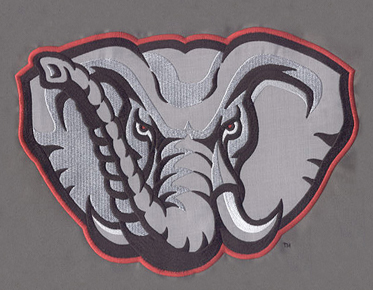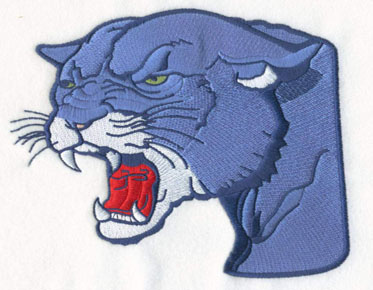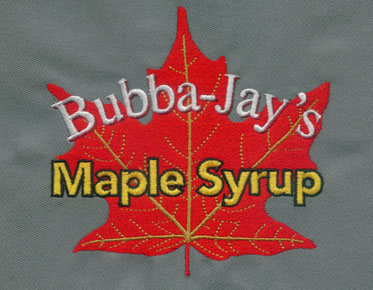How to Create an Applique in Machine Embroidery
Applique embroidery is a beautiful and old fashioned craft that uses thread and thread to create different designs by cutting out shapes from various fabrics and sewing them onto a base fabric. The craft can be done by hand embroidery or by using a machine.
Applique is a form of embroidery that has a wide range of designs and can be achieved by different techniques according to one's choice. Applique embroidery designs can be done by hand, some are done on a sewing machine:
• Smooth edge Applique
• Raw edge Applique
• Reverse Applique
• Decorative Applique
Smooth edge Applique
Using a sewing machine, the raw edge of the background fabric to be applied can be sewn around the shape to try and finish it with the stitch of choice, giving the user a smooth, neat finish. Zigzag stitching can create this effect.
Raw edge Applique
This design is great for infrequent businesses as the raw edges are not stitched to create a seamless edge, but rather adhere to the fabric on the background. The frayed edges remain intact. This design is perfect for smaller projects like greeting cards or wall-mounted pieces. Stronger, more durable stitches are used for items like pads or clothing. This design varies and can be molded according to the application.
Multi Needle Hoop Applique
This technique is more specialized and rarely used. This is a machine-based stitching technique that requires the use of a multi-needle sewing machine as well as an embroidery hoop. Different colored threads can be set on the machine to be used. To create beautiful designs, every part of your design will be stitched with precision. It is best for quilting projects. This appliqué design is more suitable for those with knowledge of embroidery.
There are different sewing machines used to achieve different types of appliqué embroidery designs.
Reverse Applique
As the name suggests, instead of sewing fabric shapes on the background fabric, this method is used to layer the fabric together and you need to sew a pattern onto it. Then, to reveal the shape and color of the floral reverse decal, cut away parts of the fabric.
Decorative Applique
This technology is open to different variations and arrangements. It can be implemented using machines. If you use a sewing machine, you have the opportunity to use different sewing styles to make your creations eye-catching. Decorative decals can be colorful or designed as desired.
Machine embroidery appliques are quick and easy, but will always ensure that the appliqué embroidery design is precise and perfect. Using fabric as a backdrop for your appliqué design instead of stitched filler can greatly reduce the number of stitches in your design, so you can stitch larger designs with fewer stitches.
Choosing the right applique for appliqué machine embroidery
This is the most important part of a decal because it is what determines whether your design will last longer. Gluing or fusing your appliqué pieces to your background fabric is great, but bonding alone will eventually wear down and your wonderful designs will fall apart.
Some of the most common stitches used with fusible decals are zigzag stitches, blanket stitches, and straight stitches, although using different stitches can make a simple quilt look pretty.
Choose the perfect thread color for appliqué embroidery
The color of the embroidery thread is an important aspect to consider when doing appliqué machine embroidery. You can try the following tips:
• When using blanket stitches, the vertical stitch should be outside the edge of the shape. If you find that the appliqué stitches drift into the appliqué shape as you work, the thread color should match the primary color in the appliqué fabric and the color of the background fabric. By doing this, any errors will become less obvious.
• Use bold decorative stitches when you don't want to bother with lining the edges with needles. An example of decorative stitching is star stitching and rick frame stitching.
• If the stitching is to be used as an overall design look for the quilt, use thread that contrasts with the appliqué design and background fabric.
In machine embroidery, digitization converts the existing artwork into an appliqué embroidery design file that can be run on the embroidery machine when the stitches are applied to the digitization of the embroidery software. In other words, embroidery digitization uses embroidery software to create machine embroidery design files that contain a series of commands that tell the embroidery machine how to sew the appliqué design.
When it comes to embroidery, artwork alone is not enough. In order to embroider a design with a computer, only the design file does not serve the desired purpose well. While artwork is also crucial, another skill often overshadows the former's in the process. Yes, we are talking about embroidery going digital. Like any other professional skill, digitized files are prepared by a professional embroidery digitizer.
Today, embroidery machines are very efficient and smart. The process is fast and very automated. However, this appliqué machine embroidery is not self-sufficient when it comes to interpreting designs. The machine itself cannot understand and embroider designs in simple digital format.
Most garment printing technologies can use design files and print from them. Embroidery is an exception as appliqué embroidery designs are made up of stitches. Digitization is the answer to bridging this gap. The number format of a design is its pin representation. It divides parameters such as stitch location, stitch type, stitch path and density into different areas of the design.
The responsibility for defining these parameters lies with the embroidery digitizer. The digital format of the design is created on a computer program commonly known as embroidery digitizing software.
With the re-emergence of the term "automatic digitization", it was introduced by some manufacturers of embroidery digitization software. Regardless of its validity, the term certainly offers exciting prospects. The basic idea is to configure the software in such a way that it can be digitally designed without external input.
Just enter the design and the software will create the digital format of the design. While this is an interesting device to think about, automated digitization is a long way off. The software can recognize the design, but still cannot define the stitch parameters through the different areas of the design. This still requires human intuition. Therefore, the role of embroidery digital services is still very important.



